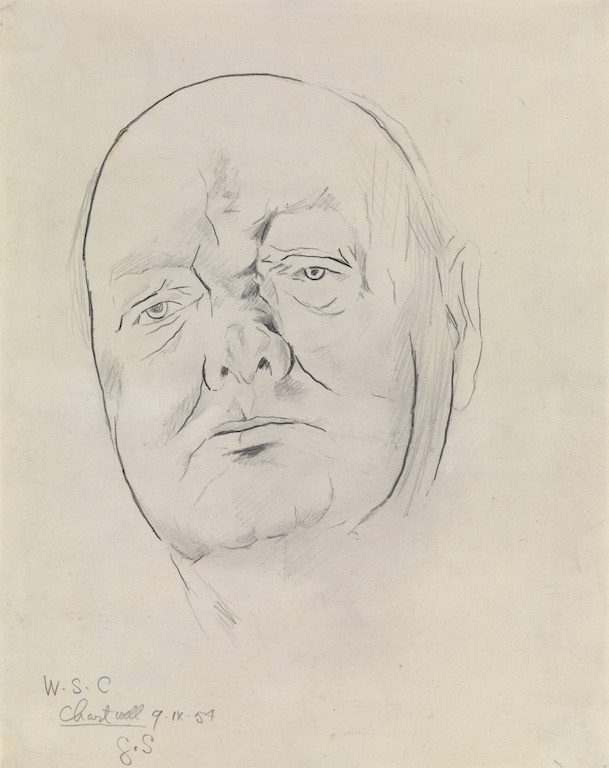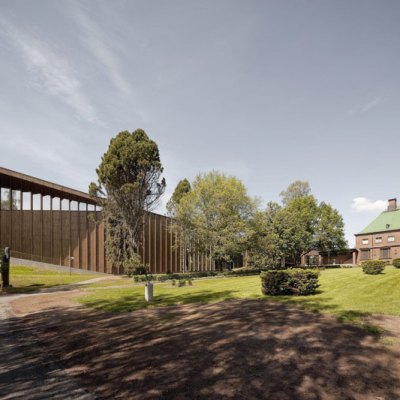When Masterpiece London (30 June–6 July) started life in 2010 it was as a precocious teenager. With all the arrogance of youth, it took on the mantle of London’s foremost summer fair from the deceased Grosvenor House Art & Antiques Fair and assumed it knew better than that grand but faded old duchess about what a fair should be in the 21st century. With its emphasis on the imaginative and experiential, perhaps it did. The theatre of art fairs – their presentation, restaurants, and talks and events programmes – has become ever more important.
Six years on Masterpiece is a far more sophisticated beast, its extravagant style toned down, the initial overt focus on luxury tempered into something more discerning. That said, there’s still room for aspirational fun; last year there was much salivating over a speedboat, albeit a beautiful Riva Aquariva – designer Marc Newson’s reimagining of a classic wooden runabout.
Under the guidance since 2013 of chief executive Nazy Vassegh, the fair has striven to be taken more seriously by those who thought it a bit brash. Today the focus on art, antiques and design, and its status as a cross-discipline fair, are pushed to the fore. ‘In the past three years we have moved away from the branded stands, the cars and wine, to more art and antiques,’ Vassegh says. ‘The luxury focus has turned to more of an emphasis on the experiential. Art is social, the atmosphere we create with good restaurants from Urban Caprice intentionally aids our exhibitors in building their relationships.’
Devant de corsage (1958), Fulco di Verdura. Hancocks

The balance of different disciplines, she continues, is crucial to selecting the 150 exhibitors, to stop some of those more powerful, affluent areas of the market from dominating. While there are large, showstopper artworks and jewellery, there’s space for the quieter disciplines such as works on paper, ceramics, books, and objets d’art. ‘The fair has always tried to reconsider [the] classical and decorative arts,’ Vassegh says. ‘Masterpiece has always been known as having great classical works and antiquities and that’s something that continues. We present museum-quality works of art in a museum-quality setting, so visitors can look, ponder, and hopefully buy.’
And do they? Yes, says Vassegh. ‘Exhibitors say that sales have grown year on year since the fair started, and last year was the strongest yet, confirming that the end of June and early July is the peak of the London art season.’ Vassegh calls it a ‘British fair with an international accent’ owing to the number of international visitors and exhibitors. ‘I’ve just been out in Hong Kong for Art Basel and everyone I mentioned Masterpiece to knew the fair. That wouldn’t have been the case a few years ago.’
This export of the brand is reflected in the international exhibitor list. There has been some churn to the line-up this year with a number of exhibitors not returning, but among the 23 returning and new participants are some well-known international names such as antiquities specialist Safani Gallery (showing for the first time since 2012) and first-timer Röbbig München, German dealers in Meissen porcelain, 18th-century furniture, bronzes and clocks. Medieval art comes courtesy of Senger Bamberg Kunsthandel, while modern and contemporary pieces are offered by Paris-based Hélène Bailly. Modernity of Stockholm covers 20th-century design, and super-jeweller of the moment Wallace Chan also takes a stand for the first time.
Another newcomer is Axel Vervoordt, who needs little introduction as the arbiter of cross-discipline style. ‘Last year, we had our exhibition “PROPORTIO” in Venice [at the Palazzo Fortuny to coincide with the Biennale], which absorbed all of our attention, so we decided to wait a year,’ says the gallery’s Anne-Sophie Dusselier of the decision to participate. ‘But now, we feel we just have to be there. The fair is becoming stronger and stronger each year.’
Central to the gallery’s stand will be a large 18th-century Italian library in walnut, filled with Egyptian and Roman antiquities. Among them will be the monumental fragment from a 2nd-century Roman marble of a standing male. The positioning of this leg and feet suggests a louche yet dynamic contrapposto pose, indicating that the fragment was probably part of a statue depicting a youth or an athlete.
An exhibitor at TEFAF Maastricht for more than 25 years, the German gallery Senger Bamberg Kunsthandel is keen to expand its British and international audience. The gallery is bringing four southern German panel paintings depicting scenes from the Passion of Christ, which date to around 1500 and have an illustrious provenance: the collection of Prince Alexander von Dietrichstein at Nikolsburg Castle in South Moravia. Although the figural arrangement is typical of the late gothic period, they are unusually free in their depiction and for over 50 years, academics have failed to agree on their exact geographical origin or the hand of the artist. They have variously been attributed to the Master of the Crailsheim Altar, the workshop of Michael Wolgemut in Nuremberg and Hans Schüchlin, also known as the Master of Ulm. Created for a winged altar, the panels make an extraordinary piece.
Fragment from a standing statue (2nd century). Axel Vervoordt

Of more certain origin is the Sleigh chair designed by Børge Mogensen for the Danish company Tage M Christensen & Co. A classic 1950s design, this version is rare due to its very short production period, says Andrew Duncanson of Modernity, a Swedish modern design gallery focused on mid-century Scandinavian pieces. Duncanson and fellow director Isaac Pineus visited the fair last year and were impressed. ‘London is a good market for design and so we decided to do Masterpiece instead of the Collective Design fair in New York,’ Pineus says. ‘It’s the first time we’ve done a fair that isn’t predominantly design-focused.’
Sleigh chair (1950s), Børge Mogensen. Modernity

Modernity adds to a roster of modern and contemporary design specialists that has strengthened in the past two years particularly. Another strong suit is post-war Italian art, which reflects the explosion of galleries in this field that have opened in London over the past year. Among those who launched in the capital in the last 12 months and are taking part in Masterpiece for the first time are Cortesi Gallery, M&L Fine Arts and Tornabuoni Art, which opened a London outpost last October – the dealership’s seventh European location. Ursula Casamonti, director of Tornabuoni in London, thinks Masterpiece ‘has become a crucial event for the London art scene, reaching the rank of bigger international art fairs’, its diversity making it an ‘omnivore’s dream’.
Tornabuoni will, as expected, feature Italian post-war masters such as Lucio
Fontana, Alberto Burri, and Alighiero Boetti alongside earlier works by Giorgio de Chirico and Marino Marini. Although Boetti first rose to prominence in the 1960s as a member of the Arte Povera group, his name later became synonymous with the large tapestries that he would design and then send to weavers in Afghanistan to be made. The gallery shows 20-9-1988, a boldly coloured tapestry that uses Boetti’s beloved grid system of letters and numbers. Another work on the stand, this time by the young Italian artist Francesca Pasquali, has been chosen to be part of principal sponsor the Royal Bank of Canada’s Fifth Plinth, which presents a different ‘Masterpiece’ every day. This year the project concentrates on ‘the female perspective’, and features works for sale at the fair that have been created by or feature women.
20-9-1988 (1988), Alighiero Boetti. Tornabuoni Art

Comparisons are often drawn between Masterpiece and Frieze Masters in October, and several exhibitors take part in both, such as London dealership Dickinson. Managing director Emma Ward says that while Frieze Masters caters for a more 20th-century and ‘classic contemporary’ orientated crowd, Masterpiece is a lifestyle fair aimed at a broader range of collector. ‘We take a much more curated presentation of 20th-century artworks to Frieze Masters,’ she says. ‘For Masterpiece we find a varied selection across the centuries works for the visitors.’
Dickinson’s star piece is a rediscovered depiction of a Madonna, Child, and St John by Anthony van Dyck whose history, says the gallery’s Molly Dorkin, has been traced back to its purchase on the Grand Tour in 1775. Since then the work, dated by Van Dyck authority Professor Christopher Brown to around 1627–30, has descended through an English and Irish family collection. It hung undisturbed for some 200 years and it was only when it was recently cleaned and the old discoloured varnish removed that its true Titian-esque tones were revealed, the vivid palette inspired by the young Van Dyck’s recent trip to Italy.
The Madonna, Child and St John (c. 1627-30) Anthony van Dyck. Dickinson

More modest drawings and works on paper can be found on the stands of exhibitors such as newcomer Stephen Ongpin, and Christopher Kingzett, who shows a black chalk and pencil study of Winston Churchill by Graham Sutherland. The drawing was done from life at Chartwell in 1954, and is a preparatory study for Sutherland’s infamous full-length portrait of the same year which Churchill hated. His wife Clementine also detested the work since the slumped elderly man it depicted was at odds with the glorious image of the war leader that she wanted to keep alive. She destroyed the painting after his death although other, similar preparatory studies survive in the collection of the National Portrait Gallery.
Study of Sir Winston Churchill (1954), Graham Sutherland. Christopher Kingzett

The eclecticism that Masterpiece prides itself on is embodied by London dealer Peter Petrou’s display. Alongside wrens’ nests set in clear acrylic by the young Irish designer Sasha Sykes and a 3rd- to 4th-century Gandharan head of Buddha, Petrou will show a delicate Mangbetu hairpin from the Democratic Republic of Congo. The pin flares at the end into a disc, normally carved separately, but carved from one piece in this early 20th-century example. A huge amount of ivory was used in the making of this object, so it would have been highly valued. Such pins were worn in part to accentuate the elongated heads that the Mangbetu people prized as a sign of status.
1753 Hairpin, (early 20th century), Democratic Republic of Congo, Mangbetu. Peter Petrou

You never know what you might find on a stand such as Peter Petrou’s or indeed on many of the stands here, but it will doubtless surprise and intrigue – and much of what is on offer is more affordable than you might expect. Therein lies the fun of a fair like Masterpiece.
Masterpiece London takes place on the South Grounds of the Royal
Hospital Chelsea from 30 June–6 July.
From the June issue of Apollo: preview and subscribe here.



